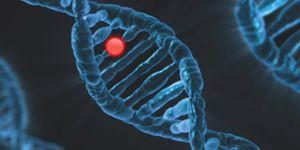Genetic Risk Factor Identified for COVID-19 Loss of Smell
Scientists have identified a common genetic risk factor for the loss of smell due to COVID-19.
Six months after testing positive for COVID-19, 1.6 million people in the US have experienced changes to their sense of smell, including the loss of smell entirely. Loss of smell and taste are distinctive symptoms of COVID-19 and are early reported symptoms of COVID-19. The loss of smell is different in COVID-19 than in other viral diseases since it occurs quite quickly and without mucus.
The cause of this symptom is still unknown. Some scientists have theories, such as Dr. Justin Turner, an associate professor of otolaryngology at Vanderbilt University. “Early data suggests that supporting cells of the olfactory epithelium are the ones mostly being infected by the virus, and presumably this leads to the death of the neurons themselves,” he said. Turner did not participate in this study. However, this explanation doesn’t explain why some people lose their sense of smell and others don’t.
The new study, published in Nature Genetics, identified a potential genetic risk factor for patients who lose their sense of smell. The research was conducted by 23andMe, a popular genomics company based in Sunnyvale, California. 23andMe provides accessible genetic testing and genotyping for individuals using an at-home kit.
Adam Auton, vice president of human genetics at 23andMe, led the company’s research, collecting survey responses from over 1 million individuals in the United States and the United Kingdom. Each of the research participants was recruited from the 23andMe customer base. The participants who reported a positive COVID test were then asked to report their symptoms. Of those 69,841, 68% experienced a loss of smell or taste.
Using this information, 23andMe researchers conducted a multi-ancestry, genome-wide association study (GWAS) to identify potential genetic markers that separated those who lost taste or smell versus those who hadn’t. GWAS are often used to pinpoint specific genetic variations associated with diseases.
Researchers identified a location near UGT2A1 and UTG2A2 genes that could be a possible genetic marker for loss of smell due to COVID-19. UTG2A1 and UTG2A2 are expressed in the nasal cavity tissue and play a role in breaking down olfactory signals, which makes them a key candidate for a potential genetic predisposition to loss of smell COVID-19.
Genetic risk factors for both losses of smell and taste were studied in this project, but researchers could only pinpoint a potential marker for loss of smell. The 23andMe research team plans to continue their investigation into UTG2A1 and UTG2A2 to understand what their specific functions are in the process of olfactory signaling. This will help to identify potential treatments for people suffering from this symptom.
“It was this really beautiful example of science where […] we were able to very quickly gain some biological insights into this disease that would otherwise be very, very difficult to do,” Auton said.
Sources: Nature Genetics, 23andMe, NBC








